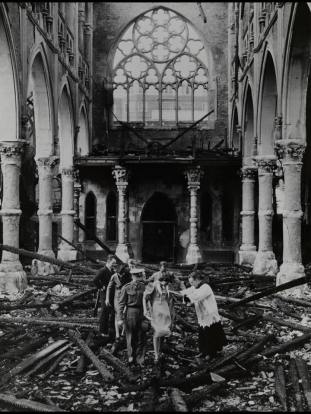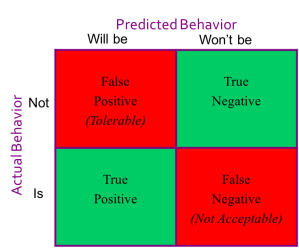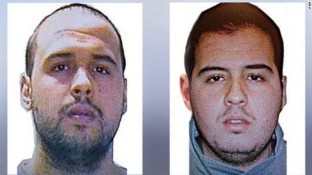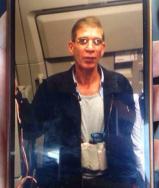The Soufan Group, an international intelligence security firm, offered this in their daily intel briefing yesterday, entitled Resiliency and the Terror Threat in Europe:
“On March 27, a group of approximately 300 far-right protesters clashed with riot police near a memorial for the victims of the Brussels terror attacks. The incident underscored the fear and tension brewing throughout the EU in the wake of the second successful Islamic State-directed mass-casualty attack in Europe in less than six months. In a heightened threat environment, it is common for security concerns to lead to increasingly hawkish and insular policies.
It is critical that EU policymakers strike a careful balance between strong and effective counterterrorism measures and policies likely to produce the unintended consequence of expanding sympathy for violent extremist causes in Europe.”
Europe just suffered it’s second mass-casualty terrorist event within six months. The Soufan briefing is a call for calm, balance and rationality as Europe, and the world, consider a response and strategy to deal with rising concern of terrorist attacks. That call is spot on in my estimation. Yet, “balance” does not mean blind avoidance or playing the ostrich with our head in the sand. Indeed, we should target and call out all acts of group sanctioned violence, including terrorism, for what it is and by the unique qualities that drive, at least in part, it’s goals and methods. In this case, that is Islamist radicalization, but the nuanced and highly important point that the briefing hits upon is we can call that dynamic out by it’s name while still guiding our response and policies to target those unique aspects, and not subject an entire group of people, here namely non-radicalized Muslims, to unwarranted sanctions and alienation.
So what is this briefing calling for? Resiliency.
Finding that balance is a type of resilience.
Resiliency: noun [re·sil·ien·cy] [\-yən(t)-sē\]
Resiliency is a quality in objects to hold or recover their shape, or in people to stay intact. This is a kind of strength.
Indeed, a kind of strength. History is replete with examples of both heroic and cowardly examples of resiliency and lack of, respectively. My mind reflects back to the Blitz occurring in London during WWII, and the steadfastness and tenacity that the Brits showed in weathering a blithering bombing campaign and massive destruction at the hands of the Nazi regime. There are many other examples on both sides of historical conflicts: Germans in Dresden; Japanese at Hiroshima and Nagasaki; Americans after Pearl Harbour and 911; Chinese at Nan-King; many nations after the 2004 Tsunami. And so on.
The curious thing about resiliency is it impacts both in it’s presence and it’s absence. Resiliency when present allows us to navigate the pains and challenges of life, to strive forward and find a way through the darkness – darkness which is almost always temporary, and which almost always has a human solution. It allows us to find that strength, balance and rationale decision making that the Soufan briefing is calling for above.
Yet, resiliency, when absent also increases our risk as individuals to resort to violence and hate as the means to solve our problems. Endemic to active shooter and mass shooter profiles is a lack of resiliency to navigate the stressors of life. It’s NOT the lack of stressors, it’s the inability to navigate them – or more precisely it is the perceived inability to navigate them which leads the individual to objectify an entire group and say to himself (almost always a “he”) “Yes, this group did me some wrong, they don’t recognize my greatness, and my solution is to harm them all because I have no other alternatives to resolve my problems.”
No one starts out there, that is a trajectory that some steadily move towards, but the direction of that path towards destruction and hate is paved by the degree of resiliency we bring to the journey, and the degree to which we allow it to come forth.
Resiliency is easily found in the super courageous stories of survival, such as the story of Louis Zamperini in Laura Hillenbrand’s book “Unbroken”, and certainly our Armed service men and women sacrificing everyday. Those are incredible examples of resiliency and heroism, but often difficult to “touch” from those of us not living in those “worlds”. Often in those extreme life conditions, such as combat, we show resiliency, press on, or we die. Not easy, but the choice is more clear cut.
Yet, resiliency really shows when we have the choice to stop living and just exist, but we choose to shine anyway, in the day to day “getting on” with our lives, doing the work, loving as we love, supporting where and when we can.
 For me, resiliency is best captured in this picture from September 14, 1940, London England.
For me, resiliency is best captured in this picture from September 14, 1940, London England.
This bombed out church in England did not stop Fusilier Tom Dowling from marrying Miss Martha Coonig. After the ceremony, Father Flynn, who performed the ceremony helped the newlywed couple over the rubble to exit the church.
We give our veterans much well-deserved thanks for their service, and sacrifice, and heroism, which also often is placed in the context of the Combat theater. But it’s important to recognize the greater sacrifice and challenge, which is their returning home and getting on with their life. Picking up from the ashes of war and continuing to love, and share, and open, and sacrifice in myriad, banal and petty ways every day. That is the real battle so many fight. For me, this picture captures that essence and the indomitable strength of the human spirit to rise again and again.
Hope floats , but it don’t swim. To move forward and join again this bumbling tribe after returning from war, or trauma, or tragedy such as in Brussels this past week – that is true resiliency, that takes real courage.
Resiliency is in all of us, no matter how barren you feel your soil is. Water it, it will grow.
You see you wouldn’t ask why the rose that grew from the concrete had damaged petals.
On the contrary, we would all celebrate its tenacity.
We would all love it’s will to reach the sun.
Well, we are the roses – this is the concrete – these are my damaged petals.
Don’t ask me why, ask me how.
~ Tupac Shakur


 impactful. Leslie Bolt, a consultant with
impactful. Leslie Bolt, a consultant with  in this encounter. Mustafa boards the plane, shows some kind of belt with wires coming out of it, claiming it is loaded with explosives. A fugitive and convict, he was on the run for 5 years when for reasons yet unknown he decided to take extreme action. In the current global culture, it was easy to assume another terror attack was underway, albeit slightly dated in its methodology of a plane hijacking. In the end the belt was fake, the man had a note written to his estranged wife, and he reported his motives were
in this encounter. Mustafa boards the plane, shows some kind of belt with wires coming out of it, claiming it is loaded with explosives. A fugitive and convict, he was on the run for 5 years when for reasons yet unknown he decided to take extreme action. In the current global culture, it was easy to assume another terror attack was underway, albeit slightly dated in its methodology of a plane hijacking. In the end the belt was fake, the man had a note written to his estranged wife, and he reported his motives were